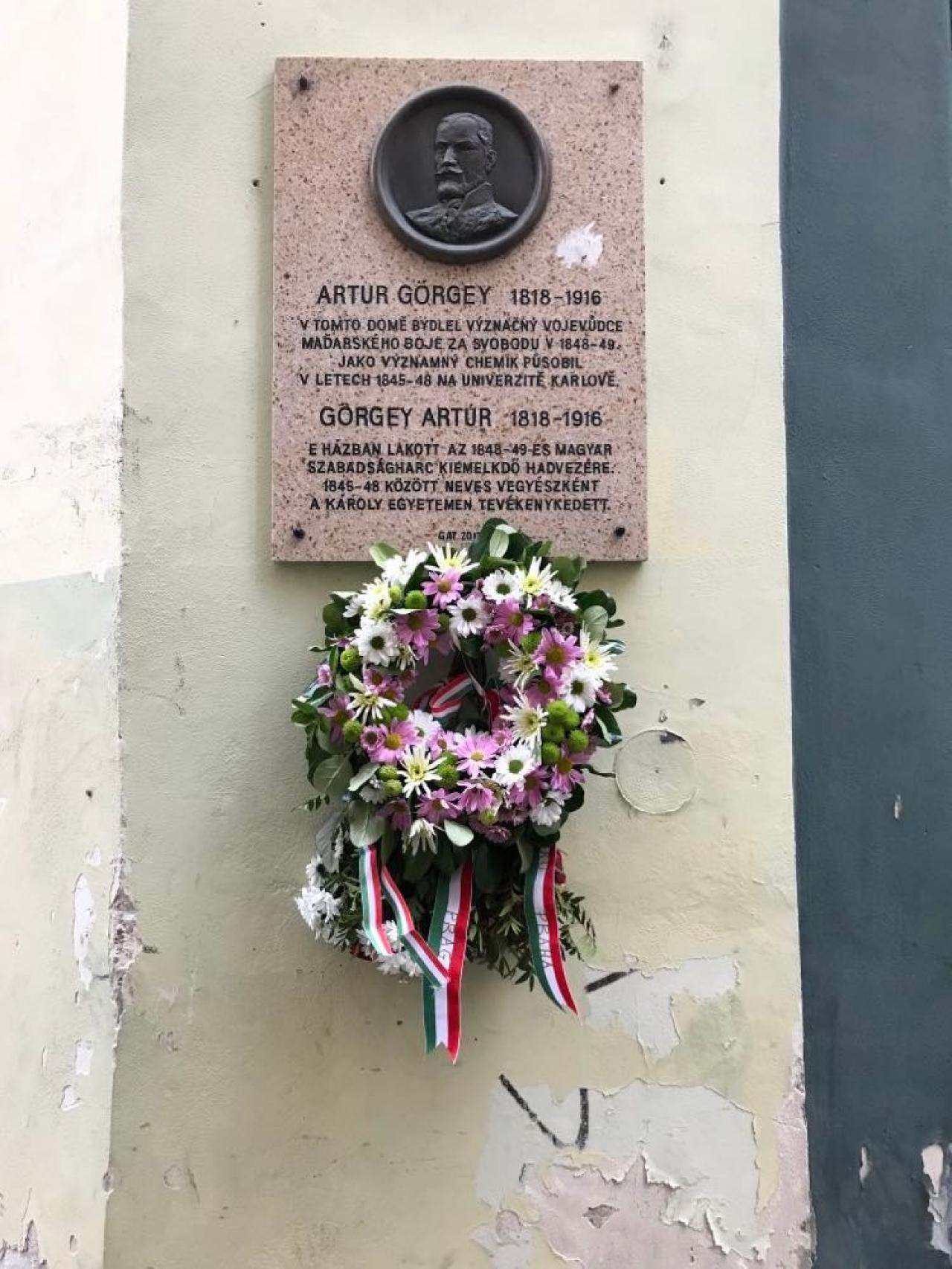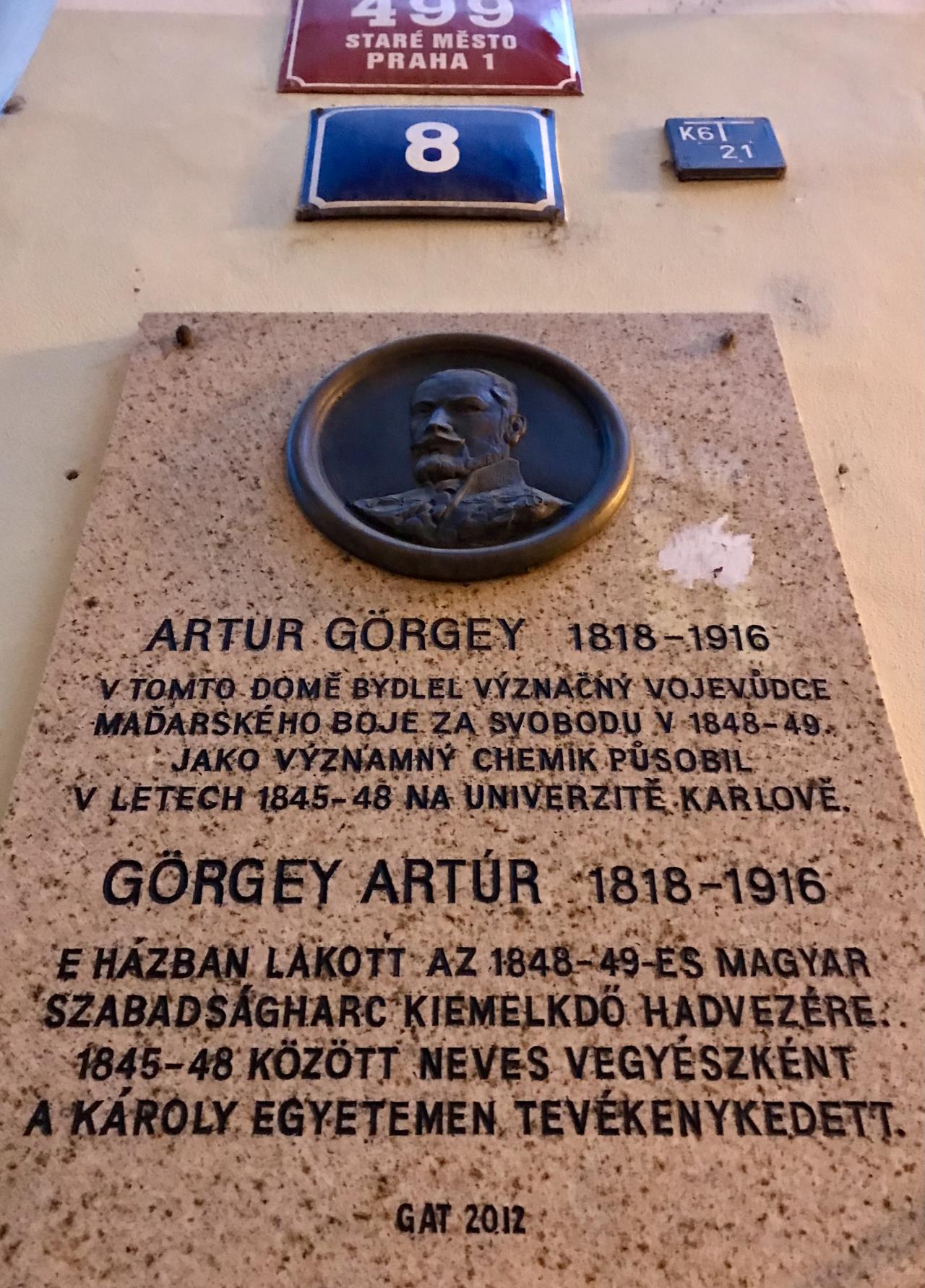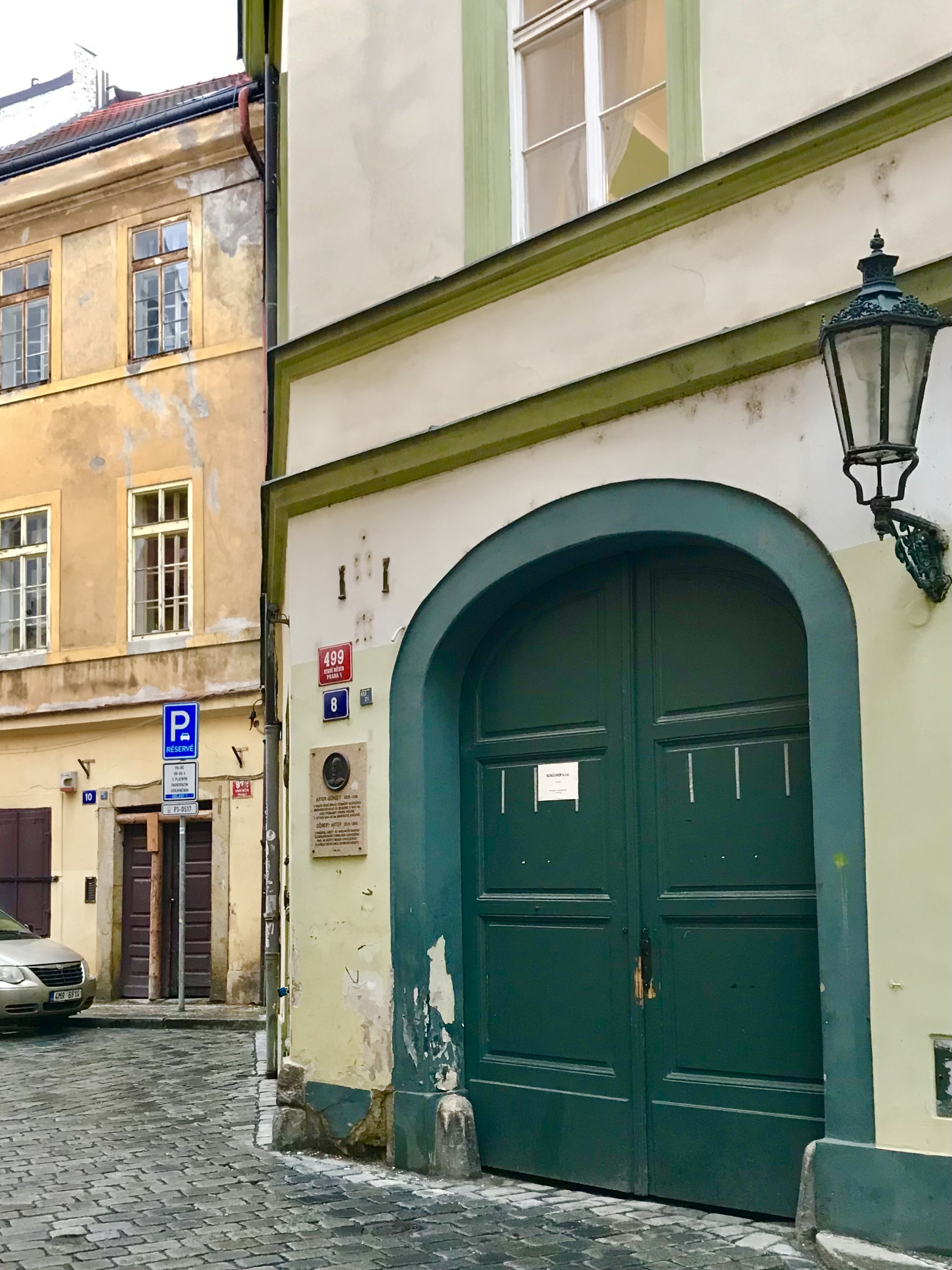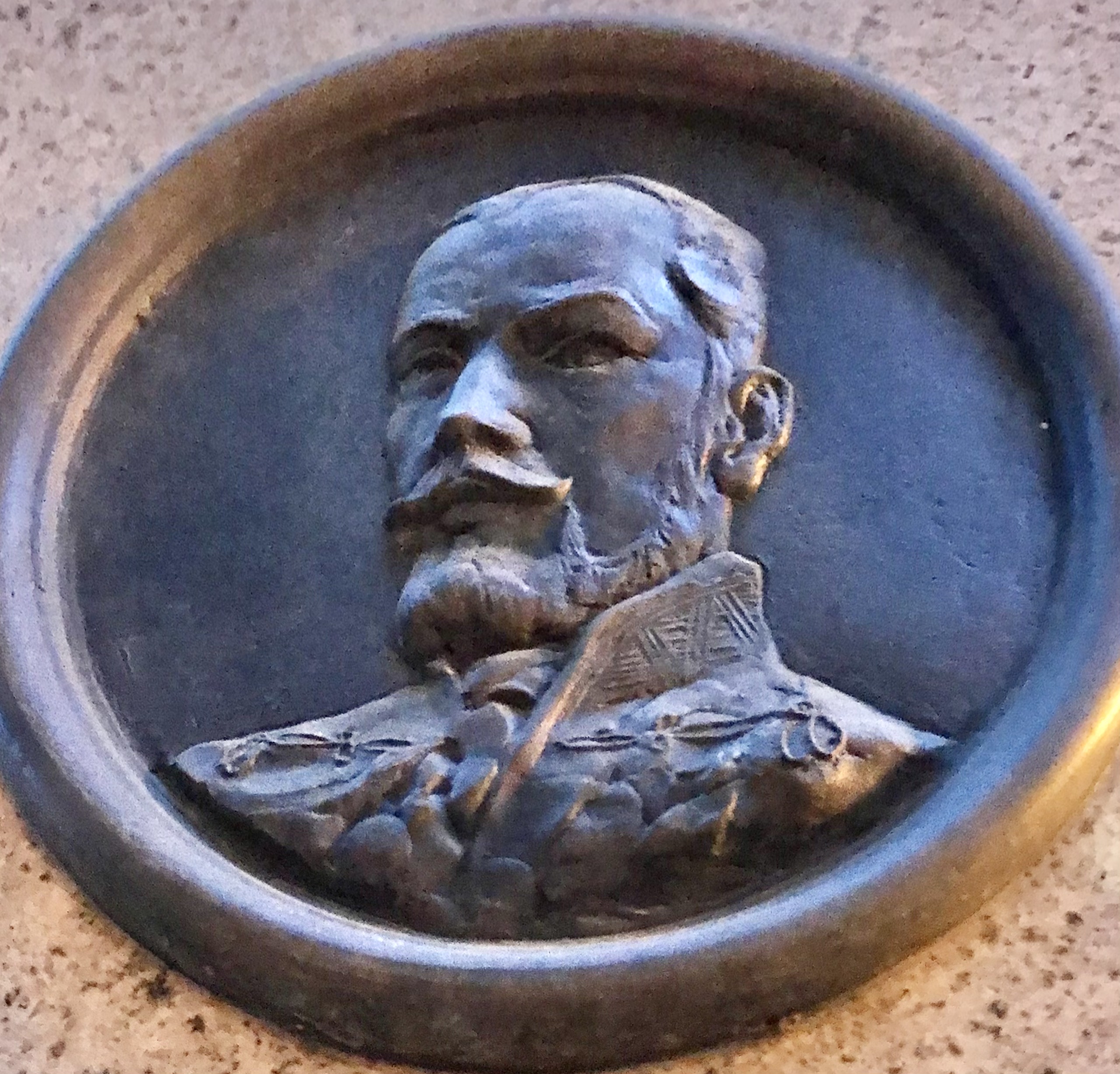The life story of Artur Görgey (1818, Toporec - 1916, Budapest), an important Hungarian scientist who studied and experimented with fatty acids, but was better known as a political leader of the Hungarian freedom struggle in the revolutionary years 1848 and 1849, and who lived and then married in Prague during his studies, is very colourful. A stone memorial plaque with an embossed medallion and a description in Czech and Hungarian draws attention to his stay in Prague:
Artur Görgey 1818–1916
A DISTINGUISHED MILITARY LEADER
OF THE HUNGARIAN FREEDOM STRUGGLE
LIVED IN THIS HOUSE IN 1848-49.
AS A PROMINENT CHEMIST, HE WORKED
1845-48 AT CHARLES UNIVERSITY.
Görgey Artúr 1818–1916
E házban lakott az 1848–49 es Magyar
Szabadságharc kiemelkdö hadvezére
1845–48 között neves vegyészként
A Károly egyetemen tevékenykedett.
GAT 2012
On the commemorative plaque (65x40 centimetres) there is a bronze relief and a portrait of the soldier by the Hungarian sculptor Sándor Návay. The installation of the Görgey memorial plaque was initiated in 2005 by the Hungarian NGO in the Czech Republic, Görgey Artúr Társaság (GAT - Society of Artúr Görgey). The most important contributor to the realization of the installation was the president of the organization himself, György István Palágyi, who devoted several years of effort to organize the donation collection for the creation of the memorial site.
The memorial plaque was officially presented to the public on 19 May 2012. The event was attended, among others, by the descendants of Artur Görgey, Budapest historian and writer Tamás Katona, employees and diplomats of the Hungarian Embassy and the Cultural Institute in Prague and representatives of several Hungarian organisations in the Czech Republic. The plaque was blessed by the Prague priest György Éles. After the unveiling of the plaque, a scientific conference and commemorative ceremony dedicated to this important scientific and cultural figure took place in the building of the Hungarian Cultural Institute in Prague. The scientific forum included several lectures on Görgey’s work in Prague and the importance of his life’s work.
Görgey was born in Toporec, Hungary (today’s Slovak Republic). He finished his secondary school studies in Kesmark and, in the spirit of family tradition and for financial reasons, continued his military career, although his interest was in the natural sciences. He became a member of the imperial personal guard in Vienna, and from 1842 served as a lieutenant in the Hussar regiment in Pest.
After his father’s death, Görgey left military service in 1845, sold his horse and his uniform and enrolled at the University in Prague to pursue his favourite field of chemistry. Görgey’s path as a chemist and much of his research were laid out by his teacher, Professor Josef Redtenbacher. He advised him to try to solve the long-standing problem of whether or not the coconut contained capric acid.
In 1847, Görgey not only confirmed the existence of this acid, but also discovered the already known myristic acid in the coconut. The main result, however, was the discovery of a new fatty acid, which he named pichurinic acid. This acid, however, became established in organic chemistry under the name given to it by the French chemist Mardson: lauric acid. Moreover, Görgey proved experimentally that the already reported discovery of another fatty acid with 11 carbon atoms by the French chemist St. Évre, namely cocinic acid, was a mistake (caused by the imperfect separation of the abovementioned cocinic and lauric acids).
Unfortunately, Görgey’s work in chemical research ended after three years. He had to return to the family farm and soon became involved in the Hungarian uprising. In the spring of 1848, he married Adéle Aubouin in Prague and returned to his native Toporec with the intention of devoting himself to the management of the farm and to the application of chemical knowledge in soil fertilisation. From Toporec he sent his famous publication on the solid and liquid fatty acids of coconut oil to the Imperial Academy in Vienna. This paper was then published in the prestigious journal Annalen der Chemie und Pharmacie (Über die festen, flüchtigen, fetten Säueren des Cocusnussöles; it was not published in Hungarian until 1907).
But the events in the independence-seeking Hungary changed Görgey’s fate - he began his second military career as a centurion at the end of May 1848 and ended it as a general and commander-in-chief at the surrender in August 1849. Forced exile followed (in Klagenfurt, Austria, until 1867). However, all his later attempts to contribute his chemical knowledge or a number of novel methods have fallen by the wayside. On his family’s advice, from the 1870s onwards he devoted himself to horticulture, although he did not abandon the chemical community. Görgey can still be seen as the first modern and quoted Hungarian lipid chemist.










